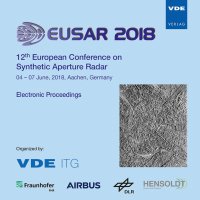A Defocused and Cross-Pol-optimized Array-Fed Reflector Antenna Concept for Spaceborne SAR Applications
Konferenz: EUSAR 2018 - 12th European Conference on Synthetic Aperture Radar
04.06.2018 - 07.06.2018 in Aachen, Germany
Tagungsband: EUSAR 2018
Seiten: 5Sprache: EnglischTyp: PDF
Persönliche VDE-Mitglieder erhalten auf diesen Artikel 10% Rabatt
Autoren:
Huber, Sigurd; Krieger, Gerhard; Moreira, Alberto (German Aerospace Center (DLR), Germany)
Inhalt:
Spaceborne synthetic aperture radar (SAR) applications follow a trend whereupon increased swath width and finer resolution at longer wavelength are demanded. These requirements pose a challenge to future SAR antenna architectures and, subsequently, the radar instruments. To this day most SAR satellites employ active phased array antennas. However, the need of large antenna apertures renders planar arrays uncomfortable in terms of mass, size and cost. A promising alternative may be found in array-fed reflector antennas, which have been in use for satellite communications for decades. The obvious advantage of unfurlable reflectors lies in the provision of large apertures, whereas the feed array complexity is confined in a relatively small volume. This paper addresses some design challenges encountered, when adopting array-fed reflector antennas for spaceborne SAR sensors. One challenge is to preserve the functionality of the SAR system in case of a failure of a feed element, which usually results in a severe gain drop in a particular direction. To deal with this effect, an approach which could be called ’feed array defocusing’ is presented. Another problem associated with array-fed reflectors are increased cross-polar levels. As low cross-polar levels are crucial for SAR polarimetry, here, an innovative azimuth beam shaping concept is introduced, which allows reducing cross-polar patterns and simultaneously suppressing the sidelobes of the azimuth antenna patterns. In order to quantify these cross-polar levels a performance figure is provided.


